No Results Found
The page you requested could not be found. Try refining your search, or use the navigation above to locate the post.
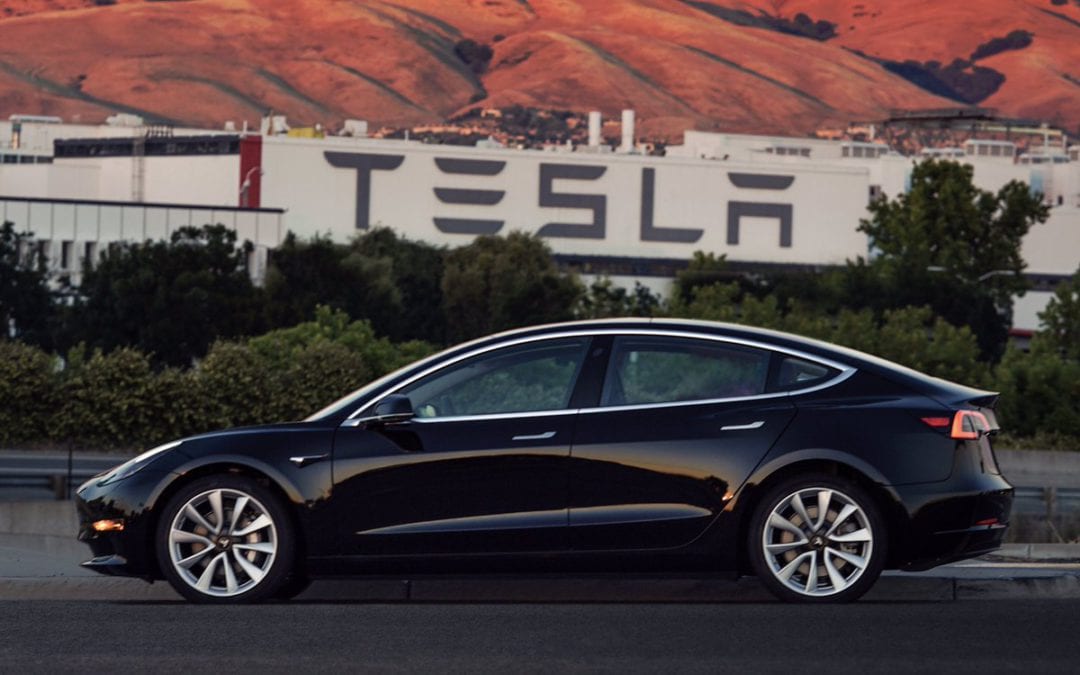
Daimler and Chinese BAIC Motors this week agreed to increase the investment in the Sino-German Joint Venture, Beijing Benz Automotive Co (BBAC), to manufacture electric vehicles. The partners agreed to a further investment of 5 billion yuan (655 million euros / $735 million) at a signing of the heads of agreement in Berlin in the presence of German Chancellor Dr. Angela Merkel and Chinese President Xi Jinping. The investment by the German automaker is a further commitment to electric vehicles as it implements the aggressive electric vehicle strategy. BBAC is the localization of the Mercedes-Benz brand and will see its first electric vehicle rolling off the production line in 2020.
In June 2017 both partners agreed to strengthen their strategic collaboration through investments for New Energy Vehicles (NEVs) in China. As part of the investment agreement, Daimler announced its intention to acquire a minority share in Beijing Electric Vehicle Co., Ltd. (BJEV), a subsidiary of the BAIC Group, with the purpose of strengthening strategic collaboration with BAIC in the NEV sector.
The investment will be used to extend the BBAC plant in Beijing, established in 2005 and already Daimler’s largest Mercedes-Benz passenger car production hub, to become a BEV production hub in China. The establishment of a BEV production hub will commence with the building of an eBattery factory, which would be Daimler’s first foreign location of its global battery production network. Daimler plans to invest one of the ten billion euro earmarked for its electric vehicle strategy in the global battery production network for Mercedes-Benz vehicles. The network already includes the site in Kamenz, Saxony, built in 2010, where a second state of the art battery factory is being built with an investment of around 500 million euros. Mercedes-Benz will source the cell for its battery plant in Beijing from Chinese suppliers.

Tesla‘s Elon Musk announced last Sunday that production of the Tesla Model 3 would commence on Friday the 7th of July, two weeks ahead of schedule. Late Saturday evening Elon posted a tweet showing two pictures of the historic vehicle with serial number one that came off the production line. According to Elon Musk, the rule at Tesla is that the first person to pay the full price will get the first Tesla Model 3 SN1. He responded to a tweet that he has the first Roadster and Model X but not the first Model S. The average sales price for a Tesla Model 3 is estimated to be around $50,000 before incentives.

Electric car sales in the USA and Norway showed healthy gains over the same period in 2016. US EV sales increased 16% over that of June 2016 while in Norway sales jumped 62% for the same period. Electric vehicle sales in Norway now stands at a record 42% of new vehicle sales. Total US EV sales for the year so far stands at around 90,000 units, 39% more than in the first half of 2016. Read our detailed breakdown of EV sales for H1 2017 in Norway and the USA by clicking on the following links.
Summary of EV sales in Norway H1 2017
Summary of USA EV Sales H1 2017
The state-owned Chinese automaker Dongfeng, a top four vehicle producer in China, which primary strategy has historically been the production of localized cars of various international auto companies such as the PSA Group, Hyundai, Honda, Nissan, and Kia. The company’s in-house developed vehicles are sold under the Dongfeng Fengshen brand which up to now had little EV models. On the 3rd of July, the GM of Dongfeng Fengshen announced during the unveiling of its AX4 SUV that the company will focus on SUVs and EVs from now going forward. The GM, Mr. Lui Hong, did not specify if the vehicles will be based on the new AX4 SUV, AX7 or the E70.
VW and robotics firm Kuka this week signed a new co-operation agreement to develop robot-based innovations for all-electric and autonomous automobiles. The new agreement will expand the existing e-smart Connect project which includes a practical and user-friendly solution for charging high-voltage batteries of electric vehicles pictured here charging the VW GenE research vehicle. The Kuka developed charger is a charging solution developed for parking garages.
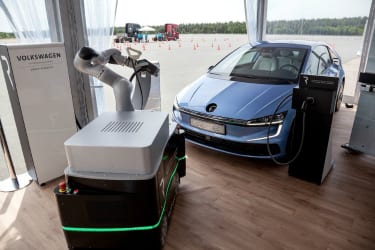 The Volkswagen Group is planning a strategic e-mobility offensive in the course of realigning its drive strategy. By the end of 2018, more than ten new electrified models will be launched on the market. A further 30 models will follow by 2025. These will be all-electric battery-powered vehicles. In parallel, Porsche will manage the ongoing expansion of infrastructure for quick-charging stations. The Volkswagen Group is providing a vision for autonomous driving of the future with the “Sedric” concept car. Audi recently established Autonomous Intelligent Driving GmbH for self-drive systems. This company is carrying out work for the entire Volkswagen Group.
The Volkswagen Group is planning a strategic e-mobility offensive in the course of realigning its drive strategy. By the end of 2018, more than ten new electrified models will be launched on the market. A further 30 models will follow by 2025. These will be all-electric battery-powered vehicles. In parallel, Porsche will manage the ongoing expansion of infrastructure for quick-charging stations. The Volkswagen Group is providing a vision for autonomous driving of the future with the “Sedric” concept car. Audi recently established Autonomous Intelligent Driving GmbH for self-drive systems. This company is carrying out work for the entire Volkswagen Group.
KUKA AG is one of the biggest providers of intelligent automation solutions and is the world’s leading manufacturer of production plants in the automobile industry. The Group’s own Research Department headquartered in Augsburg lays the technological fundamentals for innovations in industrial production and service robotics.
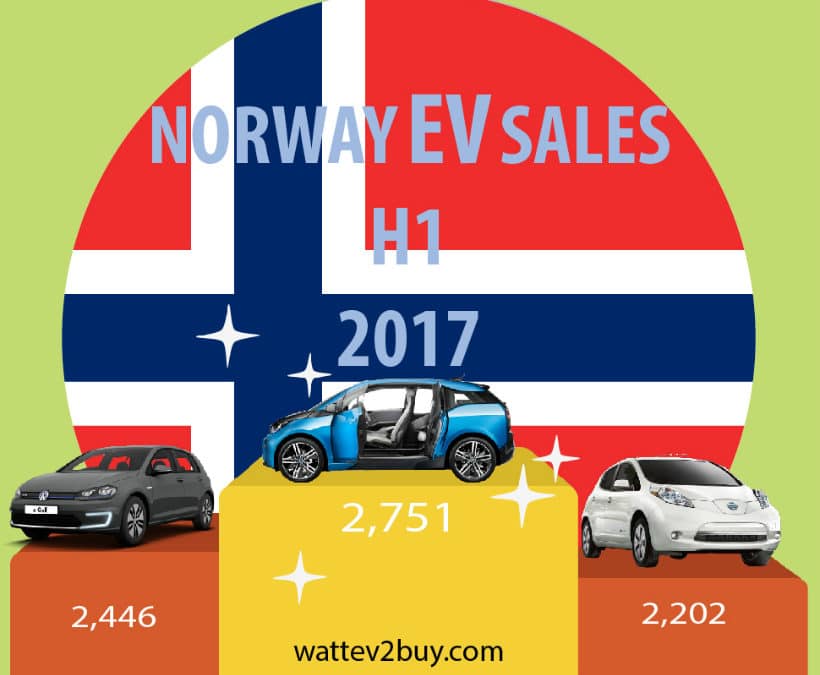
We look at the Top brands, Best and Worst Models and how the battle between battery electric (BEV) and plug-in hybrid (PHEV) technologies play out in the summary of EV Sales in Norway H1 2017.
The highlights for Norwegian electric car sales in H1 2017 was:
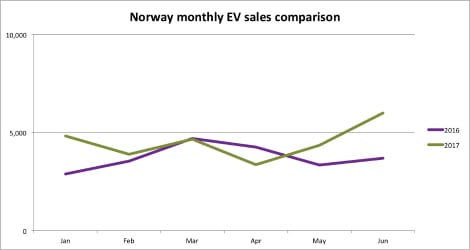
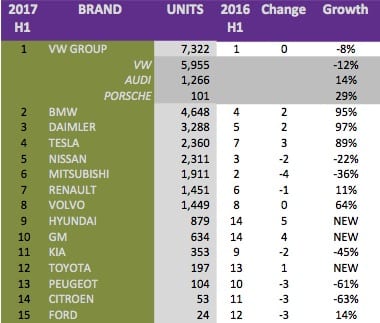 We saw very big changes in the Top 3 electric vehicle brands in Norway with only VW Group retaining its Top position, albeit with lower sales in its mass-market VW brand. Japanese automakers, Mitsubishi and Nissan were pushed from the Top 3 by German luxury automakers BMW and Daimler. Tesla sales also surpassed that of Mitsubishi and Nissan, with a strong performance by the Tesla Model X more than offsetting the slide in Tesla Model S sales. Tesla now commands over 11% of the total EV market in Norway.
We saw very big changes in the Top 3 electric vehicle brands in Norway with only VW Group retaining its Top position, albeit with lower sales in its mass-market VW brand. Japanese automakers, Mitsubishi and Nissan were pushed from the Top 3 by German luxury automakers BMW and Daimler. Tesla sales also surpassed that of Mitsubishi and Nissan, with a strong performance by the Tesla Model X more than offsetting the slide in Tesla Model S sales. Tesla now commands over 11% of the total EV market in Norway.
French automakers Renault, Peugeot and Citroën gave up positions to their peers as Hyundai and GM entered the market with the new Ioniq and Opel Ampera-e (Bolt EV) mass-market EVs. It is disappointing that first movers such as the PSA Group grew too comfortable supplying the same models for the past 5 years without preparing a response to longer range mass-market vehicles. Toyota has not achieved the same stellar sales in Norway with the new Toyota Prius as it did in some of its other markets.
The Top 10 gainers in sales growth over 2016 were mostly plug-in hybrid vehicles (PHEV) while the top selling vehicles by units were mostly battery electric vehicles (BEV). The BMW i3 rose a healthy eight positions and ate into the sales of the VW e-Golf, VW e-Up, VW Golf GTE, Audi A3 e-tron, and Nissan Leaf. Norway is now the second best market, after the USA, for the German manufactured BMW i3 accounting for 8% of all electric vehicles on the country’s roads. The Tesla Model X performed very well, helping Tesla to nearly double its sales in Norway. The rise of the Model X, now the best performing luxury EV in Norway, came at the expense of the BMW X5 xDrive and Mitsubishi Outlander. Luxury brands Daimler and BMW‘s large selection of PHEV models performed well in Norway with the Mercedes GLC350e helping Daimler to be the leader in the luxury class over BMW. It is only Daimler’s lack of an answer to the BMW i3 that kept the automaker in the third spot overall.
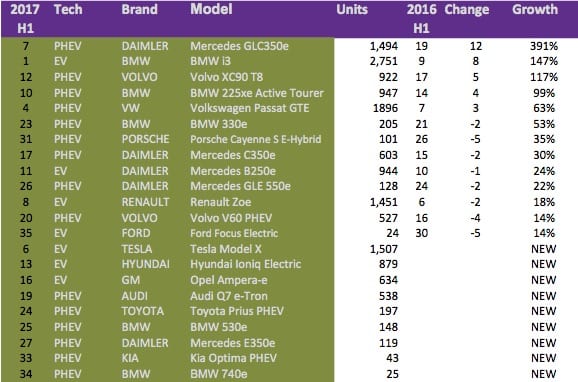
The VW brand sold 1,540 units less than last year across the VW Golf GTE, VW e-Golf, and VW e-Up models. The VW Group lost nearly 2,000 units in total if one should factor in the sales loss from the Audi A3 e-tron. The biggest overall loser was the Mitsubishi Outlander PHEV which sold 1,040 units less than the same period in 2016. The Tesla Model S is following the same trend as we see in many other countries, losing 31% or selling 388 units less than last year.
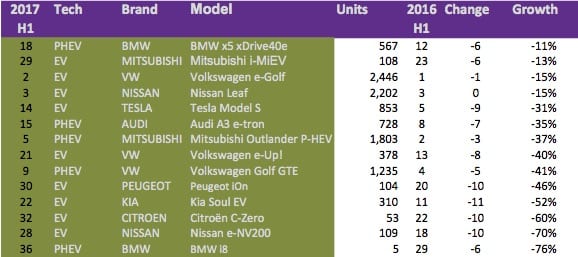
Pure electric vehicles (BEVs) extended their lead over plug-in hybrid vehicles (PHEV) to 20.6% from 17.3% in H1 2016 despite having fewer models to offer. A total of 14,753 BEVs sold in the first-half of 2017 in Norway compared to 12,231 PHEVs. For our calculation, we included the BMW i3 REx as a BEV since we don’t have an accurate breakdown of BMW i3 sales between the BEV and range extended version.
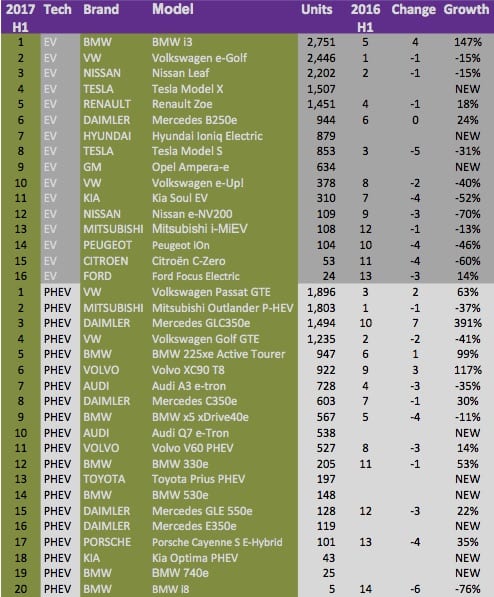
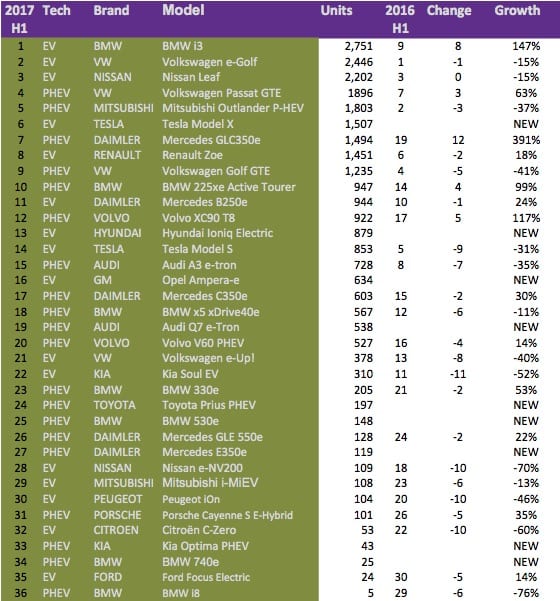
Be sure to check out our new presentation of all EVs since 2010 to gain great insights on all auto brands and their electric vehicle strategies. We have also created presentations per technology type BEV, PHEV, and FCEV.
The page you requested could not be found. Try refining your search, or use the navigation above to locate the post.
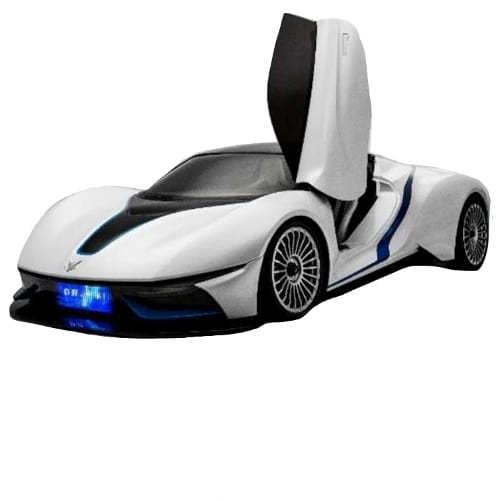
Beijing Automotive Industry Holding Co. Ltd (BAIC) is 60% owned by the Chinese Government. BAIC spun its electric vehicle business into a separate unit, Beijing Electric Vehicle Company (BJEV). The company raised $460mln in and IPO for its Electric Vehicle unit, drawing investors such as LE Holdings, the Chinese company with ties to Faraday Future and LeAuto. The BJEV factory is situated in Caiyu, Daxing, Beijing. The vehicle bodies are welded in Zhuzhou Hunan province. BJEV has launched its new range of EV’s, called Arcfox. BJEV unveiled its first concept vehicles for the Arcfox sub-brand in 2016 which comprised of the tiny open top SUV, the Arcfox-1 and the performance model the Arcfox-7 which is based on the Formula E platform of the NextEV Racing team.
BAIC was founded in September 2010 and tried to acquire the intellectual property rights of GM unit, SAAB Automobile’s in 2009 for $200m but failed. The German company, Daimler AG, acquired a 12% shareholding in BAIC during November 2013. BAIC produces some of the best-selling electric vehicles in the country, the E150/160/200 series, the EU260, and EC180 which is the top seller for 2017. The Daimler influence is clear in the design of the new BAIC EU260 model, which looks similar to the Mercedes C series.
BAIC BJEV was one of the first automakers to qualify for an electric vehicle production certificate from the Chinese Government in 2016 as part of the Chinese New Energy Vehicle Program to regulate the EV sector.
BAIC BJEV is now in its third generation of EV technology and is the best-selling electric vehicle auto company in China. The company announced an aggressive five-year plan in 2016 whereby it aims to sell 500,000 per annum by 2020. At the end of 2015, the company was the fourth largest EV manufacturer in the world and has since improved its performance with a 156% jump in sales in 2016, putting it ahead of BYD. The company is planning the launch of the Arcfox 1 in 2017 followed by other pure electric models the BAIC Senova EX260 SUV and BAIC EH300. 2018 will see the release of BAIC EH300L SUV EV and EX400L SUV.

Click through to the BAIC’s page on wattEV2Buy to explore the past, present and future EV models by the Chinese automaker.
Be sure to check out our new presentation of all EVs since 2010 to gain great insights on all auto brands and their electric vehicle strategies. We have also created presentations per technology type BEV, PHEV, Autonomous, and FCEV.
Stay tuned to wattEV2buy and follow the rest of our weekly series on Chinese EV brands.
The page you requested could not be found. Try refining your search, or use the navigation above to locate the post.
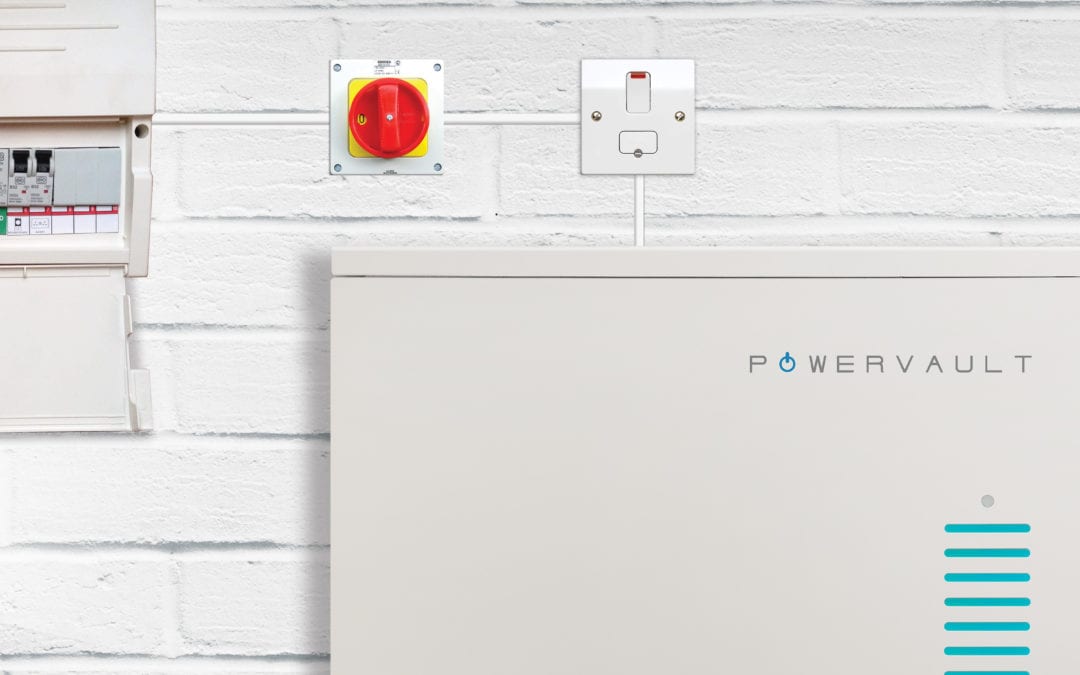
Renault and Powervault, the UK-based energy storage system manufacturer, announced a partnership to re-use electric vehicle (EV) batteries in home energy storage units. The saving to Powervault will make its storage system 30% cheaper, allowing its home storage system to become a financially viable solution to households across the UK.
Electric vehicle batteries are typically used until it depletes 20% of its capacity, after which it needs to be replaced, leaving a healthy portion of battery left for static battery applications, which are less demanding on the technology than the harsher requirements of transport applications. Typically an EVs battery can handle between 2,000 and 5,000 cycles or more depending on which supplier and what cell chemistry is used in the battery. BAIC models, for instance, using a LiFePO4 (Lithium Phosphate) based battery, guarantee 2000 cycles while the first Chevrolet Volt’s listed 5000 cycles. The Chevrolet Volt, however, electronically limits that only 65% of the battery is made available to the car to protect the battery, so to compare apples to apples, it would be better to compare throughput as appose to cycles.
Renault has already sold over 100,000 electric vehicles between its Zoe, Twizy, Kangoo and Fluence models, of which 25,000 are older than four years. Renault’s EV business model includes leasing its batteries to customers. Extending the usage of its batteries through a second-life application will provide Renault with a better return on investment and hopefully in future bring down the price of batteries faster.
According to the press release, Powervault will place 50 units on trail at existing customers who already have the company’s solar panels installed. The trial will explore the technical performance of second life batteries as well as customer reaction to home energy storage to help develop a roll-out strategy for the mass-market. The trial will be run with eligible customers of M&S Energy, plus social housing tenants and schools in the South East.
The relatively high cost of Home Storage Systems has until recently made little financial sense, with payback periods from savings overshooting the useful life of the system. Bringing system cost down to an acceptable payback of between five and seven years is seen as the holy grail for system manufacturers and homeowners.
Other EV manufacturers have already pursued business plans for second life batteries in Battery Home Systems with or without Solar. In June 2016 Nissan and Eaton installed an Energy Storage Solution in France, created from “second life” Nissan Leaf batteries. Nissan installed the Energy Storage Solution at WEBaxys, a data center. In the same month, BMW announced that it would follow Daimler, Nissan, and Tesla in creating second life energy storage systems for residential and commercial use. Second life battery systems would not have the same warranties as new systems.
Extending the life of EV batteries will also result in lower recycling related cost and overall optimize the use of the battery. Second Life applications and applications such as Vehicle-to-Grid (V2G), where an EV owner sells power back to the grid, makes electric vehicles much more appealing and blows in the face of the technologies detractors.
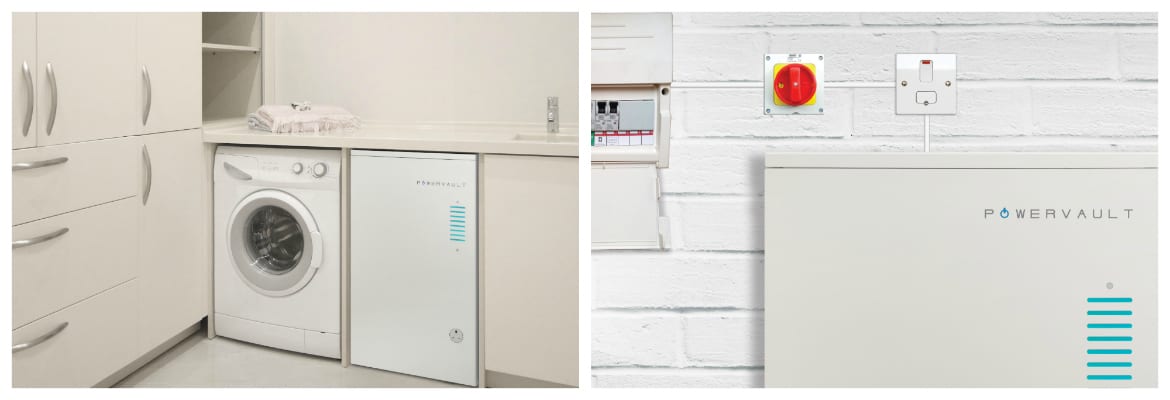
Interested in learning more about Chinese electric vehicles? Download our fun and easy app below, flick the switch to your preferred option and swipe left the models you don’t like, right the ones you do, enter the chat rooms and share your thoughts with the community.
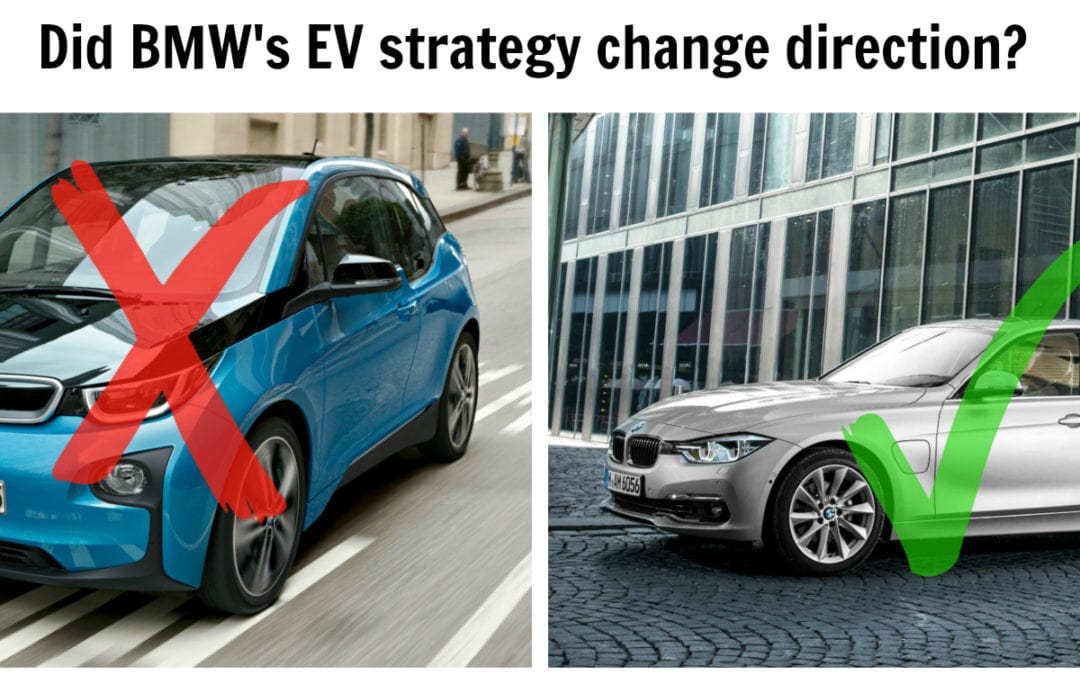
Reports this week hinted that cost issues are driving BMW to depart from its dedicated EV brand strategy. BMW CEO, Harald Krueger last year set the German automaker’s strategy as follows:
“Our Strategy Number One Next is centred on consequent lightweight construction, alternative drivetrain technology, connectivity, autonomous driving functions and the interior of the future. The iNext will set the standard from 2021″
Only three weeks ago wattEV2Buy reported that the BMW AGM determined that it would start producing it iNext autonomous brand at its Dingolfing plant form 2021.
Unconfirmed online reports this week claimed that BMW would not pursue the development of the BMW i5 as its mass market answer to the Tesla Model 3, but rather follow other carmakers such as Hyundai and Citroën, by offering electric options across existing ranges so that customers can choose a gasoline model or an electric model.
The reason for the change of heart is that the cost associated with the specialized chassis systems of the i8 and i3 makes it unsuitable for high volume production. In March BMW’s reported its lowest profitability since 2010 on the back of spending on technologies to compete with its rivals in the electrification and autonomous sectors.
It seems BMW is struggling to communicate or find a definitive answer to present as its mass market EV solution. In March of 2017, the BMW CEO hinted that the Mini could be automakers mass market EV.
The following statement by Harald Kreuger this week, “The all-electric MINI and the all-electric BMW X3 will mark the beginning of the second wave of electrification for the BMW Group, benefiting from the ongoing technological progress we are making in this area.” is seen to support the reports that the company is having a rethink on its EV Next strategy.
BMW’s change of direction will set it on a different course than its competitor in the luxury car market, Daimler, which has set an aggressive strategy to develop a separate brand to establish a market lead in the e-mobility sector.
The BMW strategy now seems to focus on finding the least cost route of adding batteries to existing models to produce vehicles for consumer’s increasing appetite for electric cars. Adding batteries to combustion vehicles is seen as a cop-out as consumers will be better served by buying electric vehicles built from the ground up around the technology.
Indian based Mahindra and Mahindra this week shed some more clarity on how it aims to compete in the electric vehicle sector. The company announced that it would construct a battery plant in Chakan, Pune City in Maharashtra State which will increase the company’s battery output ten fold. Currently, the company produces only around 500 battery packs a month for its e2O, and eVerito models from imported cells at its Bengaluru plant, the Chakan plant has a target of 5,000 units a month. The Indian company is also developing a high powered electric vehicle platform available by 2019 that is capable of speeds up to 200km/h / 125mph and a range of 350 – 400km (250 miles). The Indian government has set a lofty goal of 100% electrification of the countries vehicle fleet by 2030, but to date, the technology has failed to get any traction that can compare with its peer, China.
US-based research firm Research and Markets this week released a report indicating that they see the EV charging infrastructure market should be valued at around $45 billion by 2025. A rush by governments to encourage the adoption of electric vehicles is seen as the main driver for the uptake of the technology. The research firm also reported on the adoption trends within the charging technology sector, stating that the CHAdeMO connectors would be replaced by Combined Charging System (CCS) as the preferred connector type. The fast charger segment is said to lead over slow or home-based chargers, showing an estimated CAGR of 47.9% from 2017 to 2025.
Research firm Bloomberg New Energy Finance (BNEF) this week reported that it expects EVs to reach price parity with internal combustion vehicles (ICE) in the USA and Europe by 2025. Falling battery prices driving down cost is seen as the main reason behind the conclusion. Currently, battery prices constitute around 50% of an EVs cost, by 2020 BNEF forecast batteries to only constitute between 23% and 16% of an electric car’s total cost by 2030. The report did not compare the total cost of ownership, which is expected to favor EVs this decade already. It is unclear if the study did take into consideration regional factors such as the EU adding as much as $340 per engine on diesel engines from 2020, which should increase the cost of combustion engines.
In March the UK based Detroit Electric signed a joint venture agreement with Shanghai-listed Far East Smarter Energy Group (Smarter Energy). The JV called for the Chinese partner to invest $370 million over a four-year period. Already the JV is experiencing stress as Smarter Energy this week announced that it would transfer 40% in Detroit Electric to Far East Holding Group (Holding) to secure financing. The transaction was done at no value. Smarter Energy revealed that the financing round is taking longer than anticipated and that it is struggling to secure the required production certificates from the Chinese Government to be allowed to produce electric vehicles. Up till May 2017, only fourteen such permits have been granted by the Chinese authorities. The remaining shareholding structure of the joint venture now has Detroit Electric owning 50% while Yixing Environmental Protection Science and Technology Industrial Park 10%. It is unclear how the restructuring will impact on the company’s timeline to bring the SP:01 to production by 2018.
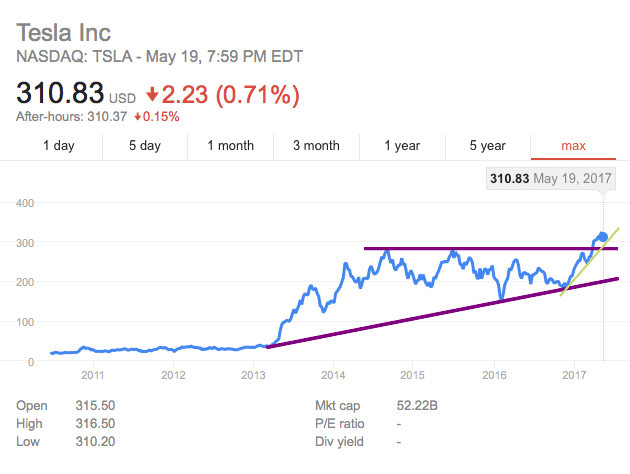
#1 – Where to next for Tesla’s share price after Morgan Stanley downgrade?
On the third of April, I predicted that Tesla’s share price will at least reach a first target of $320 after the breakout of the resistance at $290. This week Morgan Stanley analyst Adam Jonas, one of the pro-Tesla investment houses of late, downgraded its position to “equal-weight” from “overweight”, sending the stock down 3% and closing the week at $310.83 from a high of $325.22. The Morgan Stanley call is purely based on the Model 3 deliveries, which it now sees lower at a higher associated cash burn on R&D and Capex.
Tesla CEO Elon Musk also referred to the high share price in a telephonic interview this week with the Guardian where he was quoted saying “I do believe this market cap is higher than we have any right to deserve”. Before hitting the sell button it is important however to read Elon’s statement in the correct context, that investors price the share based on expectations not on past performance. The statement was made in a similar vein as a tweet by him in April on the topic where he responded “Tesla is absurdly overvalued if based on the past, but that’s irrelevant. A stock price represents risk-adjusted future cash flows.”
Technically I still hold out that there is more in the share price and that the count in the breakout formation at $290 in April can see the price go as high as $400, but at least $380 with a stop loss at $285. Should the stock fall through $285 look for buying opportunities again in the lower $200’s. Fundamentally, however, it all boils down to Tesla’s ability to surprise the market on Model 3 deliveries, which everyone and its dog seems to doubt. Watching the recent Ted interview of Elon Musk and listening to the Skype interview of Tom Mueller, Chief Propulsion Technology Officer at SpaceX, with a group of astronomists at the New York University Astronomy Society my money is on Tesla surprising the market on the upside, barring no technical issues arise in the new plant. Read extracts from Tom Mueller interview below and decide for yourself.
And now we have the lowest-cost, most reliable engines in the world. And it was basically because of that decision, to go to do that. So that’s one of the examples of Elon just really pushing— he always says we need to push to the limits of physics. Like, an example I’ll give is, on the car factory; you know, a car moves through a typical factory, like a Toyota or a Chevy factory; a car is moving at you know, inches per second. It’s like, much less than walking speed. And his thoughts are that the machinery, the robots that are building the car should move as fast as they can. They shouldn’t be moving so fast you can’t see them. That’s why you can’t have people in there, because they’d get crushed; people move too slow. That’s the way he thinks. “So, what are the physical limits of how fast you can make a car?” He looks at videos of like, coke cans being made, and things like that, where you can’t even see them; it’s just a blur. And, you know, the puck of aluminum, cut it up, deep-draw, fill it with coke, you put the lid on, you put the lid on it; it’s just like going down the assembly line so fast you can’t even see it. And Elon wants to do that with cars.
That’s just the way he thinks. Nobody else thinks that way. And that’s why he’s going to kill the industry; cars also. Because it’s just going to make these cars— basically, you can make, you know, ten times as many cars in the same size factory if you do it that way. And that’s, you know, the major cost of the car is not the material in the car; it’s the factory that builds the car. So that’s the way he thinks. He looks at it from first principles, like “Why does a car cost so much to make?” Well, you’ve got this gigantic piece of real estate, and all these employees in this gigantic building; and you can only make so many cars in this building. You need to make more cars in the same building with the same number of people. And that’s what they’re working on at Tesla.
#2 – NIO EP9 Shatters records set by all production car at Nürburgring
In November 2017 the NIO EP9 broke the record as the fastest Electric Vehicle around the challenging German circuit, the Nürburgring in a time of 7:05:12. The start-up brand NIO then proceeded to complete the world first autonomous lap at a speed of 160 mph around the America‘s Track in Austin Texa. As if all these records weren’t enough the NIO EP9 this week shattered all records for production vehicles set around the around the Nürburgring. The record means electric vehicles are now officially faster than combustion based production cars. The NIO EP9 set a new lap record in a time of 6:45.90 around the 12mile long track, a full 6 seconds faster than the previous record set by the Lamborghini Huracan performance. See the video of the lap here. The weirdest thing about the lap is that the noise, or lack of it, does not give you the impression of speed but more the feeling that its a Scalextric toy race car.
#3 – Toyota still not fully behind electric vehicles
Toyota still has not completely put its full weight behind electric vehicles is it continues pursuing Hydrogen Fuel Cell (HFC) technology. The Japanese automaker this week announced that it signed a Memorandum of Understanding with ten companies to jointly develop 300 HFC stations of the next 10 years in the country. Even though Toyota pioneered the first mass-market Plug-in Hybrid the company forsook the lead it had on the technology for a hydrogen future. Last year the company admitted that electric vehicles have some relevance by creating a new division to build its first pure electric vehicle. The CEO, Akio Toyoda personally took leadership of the division but the company has not changed its strategy away from the HFC path with it sees as the relevant technology from 2025. The HFC strategy is in conflict with most recent analysis which sees electric vehicles becoming the dominant technology from 2025, some forecasts this week even says it will completely replace combustion engines.
#4 – Electrified public transport gets a leg up this week
As electric vehicles become more popular so does the application for other modes of transport. For long the Chinese automakers, such as BYD and Changjiang had the monopoly on electric buses, but this week we saw more automakers enter the segment. The challenge with electric buses, other than cars is that you need ultra fast charging of huge batteries, and these huge batteries add weight to the vehicle.To be equipped with a 256kWh battery. Two automakers outside of mainland China this week announced that they are entering the electrified bus market.
Hyundai announced that it would develop an electric bus for the local market next year. The bus is expected to be equipped with a huge 256kWh battery.
Mercedes-Benz released the following statement at the Global Public Transport Summit (GPTS) in Montreal
In parallel with the optimisation of the diesel drive system, Mercedes-Benz is working hard on the all-electric-powered and locally emission-free city bus. The all-electric Citaro is due to go into series production in the coming year – prototypes are already undergoing testing on the roads. The electrically powered Citaro will open up a new chapter in electric mobility, because Mercedes-Benz is not looking at the city bus in isolation, but as an integral part of a highly efficient transport system.
#5 – Volvo to stop developing diesel engines
Volvo‘s CEO Hakan Samuelsson this week in an interview with the German publication, Frankfurter Allgemeine Zeitung, confirmed that the Chinese-owned Swedish company would utilize the springboard offered by Tesla and focus on electric drivetrains and 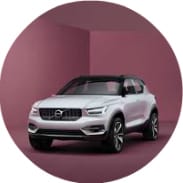 stop developing
stop developing 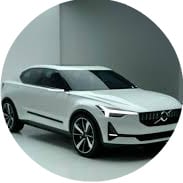 diesel engines. The company is expected to bring its first pure electric vehicle to market by 2019. The vehicle is expected to be based on one of its two Volvo 40 concepts revealed earlier this year shown here. Though it’s not decided if it would be an SUV or sedan, the electric car will be developed on the company’s new Modular Electrification Platform (MEP) and build in China. The EV will have a minimum range of 250 miles and priced around $40,000. Mr. Samuelsson acknowledges the role Tesla played in creating commercial interest for high-quality well-designed electric vehicles, an area aligned to Volvo’s strategy. Volvo just released a new improved range of diesel and petrol engines and with European regulation potentially adding as much as $340 per engine from 2020 diesel engines would just be too expensive to produce according to the CEO.
diesel engines. The company is expected to bring its first pure electric vehicle to market by 2019. The vehicle is expected to be based on one of its two Volvo 40 concepts revealed earlier this year shown here. Though it’s not decided if it would be an SUV or sedan, the electric car will be developed on the company’s new Modular Electrification Platform (MEP) and build in China. The EV will have a minimum range of 250 miles and priced around $40,000. Mr. Samuelsson acknowledges the role Tesla played in creating commercial interest for high-quality well-designed electric vehicles, an area aligned to Volvo’s strategy. Volvo just released a new improved range of diesel and petrol engines and with European regulation potentially adding as much as $340 per engine from 2020 diesel engines would just be too expensive to produce according to the CEO.
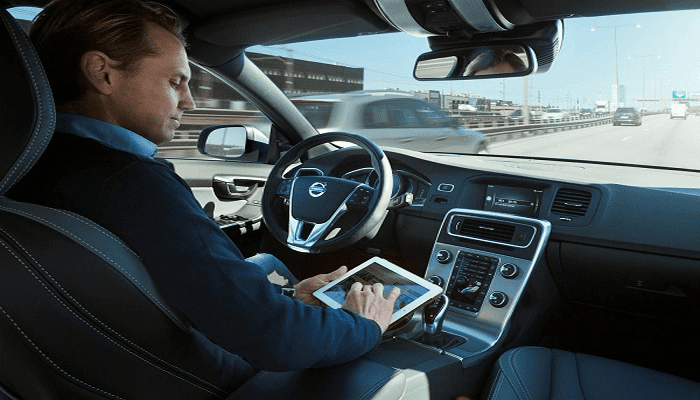
A slew of self-driving pilot programs has been announced recently, the latest being Delphi. The auto parts company previously owned by GM announced that it would roll out self-driving taxis in the USA this year. Delphi is already piloting a program in Singapore where it pilots an Audi SQ5, kitted with 26 sensors. The pilot would be extended to three vehicles in June and is done in conjunction with the Singapore government where the company hopes to have operating taxi service within three years. According to Automotive News it is anticipated that Delphi will host the US pilot in either Pittsburg or Boston and that services would commence in September 2017.
Delphi’s pilot program allows passengers to see what the cars “brain” sees on a tablet, which it calls its “comfort cam”, soothing first-time users of the service. Already speculation is rife that Intel, which just last month paid a staggering $15 billion for Isreali autonomous tech company, Mobileye, would acquire Delphi. The three companies are already integrating their technologies to provide autonomous systems for car manufacturers, as soon as 2019.
Delphi would extend the pilot to Europe in the 3rd quarter and will switch its test vehicles to an undefined electric vehicle by 2018. The regulatory environment for public testing eased last week as Germany passed a law allowing for the public testing of autonomous vehicles.
Competitors, Lyft and Waymo also signed a partnership agreement this week. Waymo, previously know as Google’s self-driving program is already piloting Chrysler Minivans and Lexuses in Phoenix. The company last month invited people living in South East Phoenix to apply for the program, allowing the participant to hail a ride via a mobile app for local trips. Already as much as 10,000 such rides have been completed by Google staff. Waymo announced in April that it would increase its autonomous fleet from 100 to 600 Chrysler Pacifica minivans. It is no surprise that Waymo did not partner with Uber since Waymo claims that Uber stole some of its technology in an ongoing court case between the two companies. Reuters reported that according to Lyft the transaction is not exclusive, leaving the door open for other partnerships such as Lyft’s shareholder GM.
GM paid $500 million last year for a stake in the USAs number two ride-sharing company; the automaker also acquired Cruise Automation to spearhead its autonomous vehicle strategy. GM is very aggressive in the autonomous space, trying to carve out a lead to make up for ground lost to newcomers such as Tesla. GM is spending vast amounts of money to this end, for instance paying $1.1 billion to acquire its second Y Incubator company, the Italian based OSVehicle, to develop a self-driving “Vehicle-as-a -Service” (VaaS) platform. GM’s efforts are seeming to pay off as the respected research firm, Navigant, recently ranked it and Ford at the top of the self-driving leaderboard.
Companies like Delphi, Intel, and Nvidia, are hoping to sell their driverless systems to automakers in what is expected to be a market of around $100 billion within the next couple of years. BMW last week unveiled 40 BMW 7-series equipped with Intel’s driverless technology. The test, using the specially converted autonomous 7-Series is part of the German company’s project that will see 155 million test miles driven. Nvidia, an early front-runner in the self-driving tech space lat week, announced that Toyota would use its autonomous microchip built on Nvidia’s artificial intelligence platform called Drive PX. Both Daimler and Audi have already partnered with Nvidia on its Drive PX system.
Precursors to larger ride sharing and hailing services would be regulation, computing infrastructure, and connectivity. Governments would have to enact regulation to allow driverless cars while processing power and data centers need to be increased many fold to accommodate driverless technology. So also is 5G connection a requirement, daily use of an average self-driving car would be four terabytes of data.
In February we provided a summary of the disengagement reports by companies doing public testing on Californias’ roads. Only 10 of the permitted 20 companies filed reports, this number would definitely increase in 2017 judging from all the pilots announced recently. The pilot programs currently in action are mostly for level three and four autonomy and are expected to be commercially available from 2020 onwards. Even though it is expected that the Tesla 2018 models would have level five compliant hardware installed full autonomy is only expected in the latter half of the next decade.
The video by BMW below provides a short overview of the different autonomous driving levels.
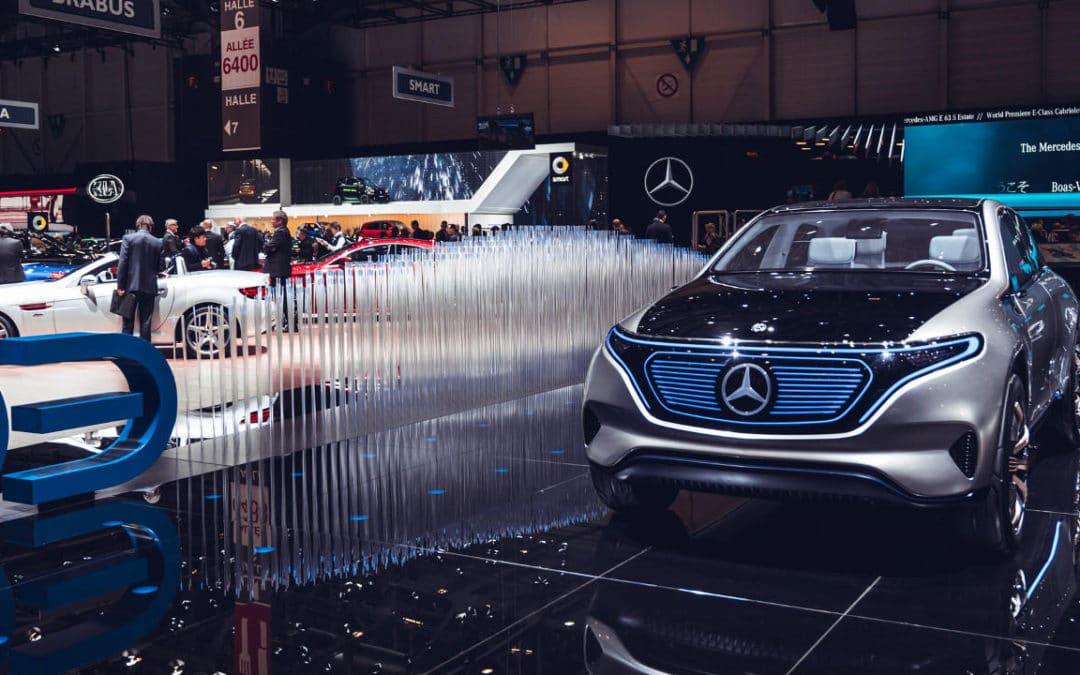
By unpacking press statements from the world’s top luxury carmakers, BMW and Daimler, over the last eight months it is clear that the Daimler EV strategy will trump that of BMW over the next decade. Up to now, BMW has led the race between the two companies in the EV sector, but the German automaker is failing to capitalize on its position. BMW was first to market with a pure electric vehicle, the BMW i3, which success even surprised itself. This week BMW released its sales data for the first quarter 2017, showing that EVs now constitute 3% of its total sales as EV sales jumped 50%. The Chairman of the Board, Mr. Harald Kruger was quoted saying “We are therefore well on course to delivering more than 100,000 electrified vehicles for the first time in 2017”. The news from the top seems very bullish on face-value but therein lies the problem. BMWs management has been flip-flopping on finding a consensus view on where they see electric vehicles in the future. This week’s news from BMW is in stark contrast from news only six months earlier when the Board grappled with if it should pursue EVs at all.
In September 2016 Reuters reported that the executive of BMW would not attend the 2016 Paris Auto Show as it grappled with its electric car strategy. At the time the company lost momentum against Mercedes and VW who is chasing Tesla. The lack of momentum caused the head of the BMW i8 project to jump ship to Future Mobility, taking most of the core team with him. The executive team remained split on the future of electric vehicles and investing in what is initially a loss making exercise. The top executive team traditionally attend the Paris Auto Show, which is one of the most prestigious events in the industry, highlighting the significance of the board’s action.
The pro-EV block prevailed but despite BMW reaffirming its strategy to pursue the development of electric vehicles the company remained downbeat on the sector. BMW’s Chief Financial Officer, Frederick Eichner, was quoted by Bloomberg saying “We’ve learned that people aren’t prepared to pay a higher price for an electric vehicle. I don’t see some kind of disruptive element coming from electric cars that would prompt sales to go up quickly in the next five to six years.” So its seems that BMW changed its wait-and-see approach to a go-it-slow approach and remained cautious when it came to investing aggressively in the new technology. Where at first the company was a leader in developing the new proprietary technology it now joined most of the other laggards in producing PHEV variants of existing models, with no clarity on when BEV models will be available and how many.
In early March 2017, Mr. Harald Krüger was quoted by Reuters as saying “The fully electric drivetrain will be integrated into our core brands. To achieve this, we are now gearing our architectures toward combustion engines and pure battery electric drivetrains,” as the company plans to include EV manufacturing in its mass production line. Currently, the company’s electric vehicles are assembled at its low-volume plant in Leipzig. BMW will also expand the capacity of its PHEV drivetrain plant in Thailand and fund the cost of the investment in its electric vehicle infrastructure through a production increase in its profitable SUV segment. To ramp up production to meet expected demand for the new Mini Countryman PHEV the company is considering manufacturing facilities for the Mini in Germany, the Netherlands, and the UK. The company also announced that it would start producing its iNext autonomous brand at its Dingolfing plant form 2021. Other models expected from the German automaker is the i8 Roadster PHEV (2018), a BEV Mini (2019), and a BEV X3 (2020). BMW‘s long-term electric vehicle strategy is to have EV’s contribute to between 15% and 25% of its sales by 2025.
Daimler, on the other hand, had the foresight at the start of the cycle to be an early investor in Tesla. The company invested $50 million in the Series E round in May 2009, and have been hailed by Elon Musk for saving the company from bankruptcy in the early years. Unfortunately, Daimler failed to follow the same daring approach it invested in in its own business model and fell behind BMW and Tesla.
Daimler’s passive stance changed in July 2016 when its CEO, Dieter Zetsche acknowledged the technology’s importance and expected an increase in EVs market share of the total vehicle market. The German automaker shifted its strategy to accelerate its efforts to stay abreast of its competitors, Tesla and BMW‘s push to ramp up production in the luxury electric vehicle segment. Within a short space of time, the company announced a massive $11Bln investment to support its electric vehicle strategy up to 2025, unveiled its new all-electric car brand, the EQ (Electric Intelligence) and unveiled a fully electric semi-truck. The EQ brand will develop a host of EV related services and products, not just cars, such as charging stations and battery packs. The first vehicle to come from the brand is targeted at the highly popular SUV segment, a clever move to differentiate the brand in this hotly contested sector. The EQ SUV is said to have a battery capacity of 70kWh providing a range of over 250miles powering two electric motors providing 300kW of power. The production version is expected to be launched in 2018.
In early April 2017 Daimler announced that it would accelerate its $11 billion investment in electric vehicles by bringing it forward with three years from 2025, to 2022. Reuters reported that the automaker’s aggressive stance are the result of it not being able to cut fleet emissions of 123gm CO2/km from 2015 to 2016 in Europe. Europe has set a very stringent target of 95gm CO2/km by 2020. Daimler’s own target for 2020 is 100gm CO2. The German automaker cites the popularity of SUV’s as the reason for it not cutting its emissions for the first time since 2007. Daimler’s success in the SUV segment helped it to regain its dominance over archrival BMW for the first time since 2005.
In May 2017 Automotive News interviewed Mercedes-Benz head of production and supply chain management, Markus Schaefer. When asked how the company is preparing to assemble the EQ brand Mr. Schaefer responded – “We believe the EQ family will represent 15 to 25 percent of our sales in 2025, but at the end of the day, no one can say with certainty how high the share will be. Therefore, we need maximum flexibility, meaning we will integrate the EQ models into the same assembly line as the combustion engine models they will potentially replace. Preparations are on schedule, so our plants should be capable of operating at stable output levels whatever the EV take rates may be. But in order to facilitate this greater flexibility, we also had to adapt our manufacturing.” The capacity to mass produce EVs efficiently through the full-flex plant manufacturing strategy is set to help the company recover the massive investment it will make to get ahead in the EV sector.
Daimler is also investing heavily in charging infrastructure in Europe to facilitate the adoption of electric vehicles. The final proof of Daimler’s strategy will be the early release of a full electric SUV. 2018 is certainly going to be an exciting year for the electric vehicle market.
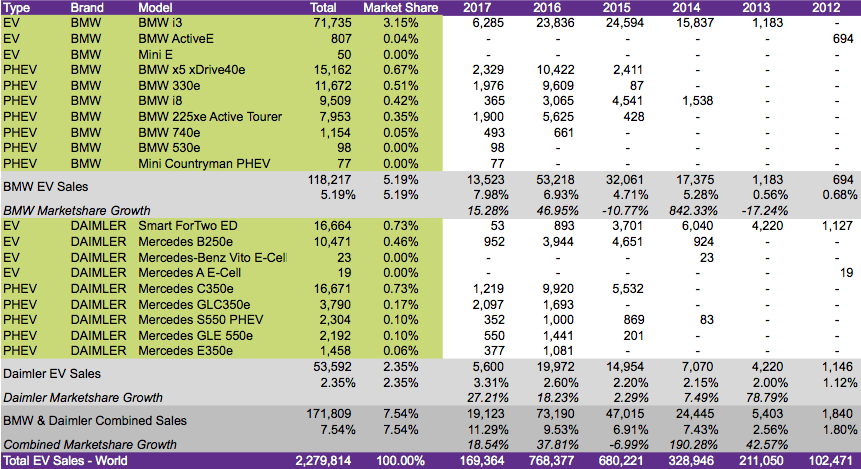
Note to data: The BMW i3 is listed as a BEV but includes sales for the BMW i3REx, a range-extended vehicle, a PHEV.
Interested in learning more about electric vehicles? Download our fun and easy app below, set your daily commute distance and price range, swipe left the models you don’t like, right the ones you do, enter the chat rooms and share your thoughts with the community.
The page you requested could not be found. Try refining your search, or use the navigation above to locate the post.
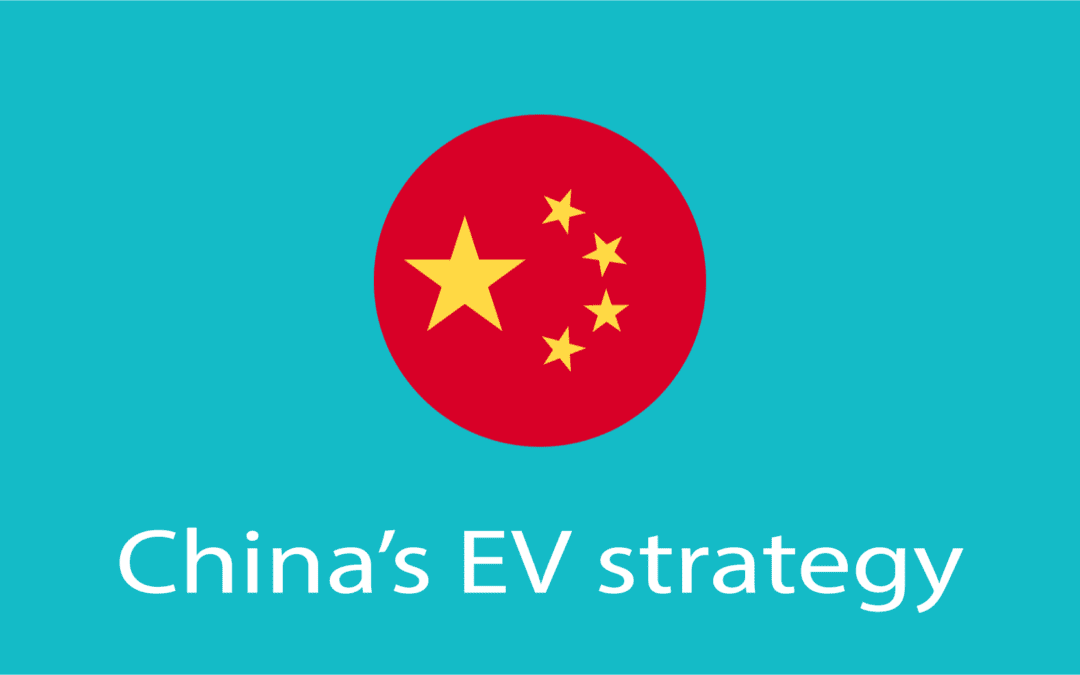
The Chinese Government released its long-term development plan for the automotive sector on the 25th of April 2017, setting out the China EV strategy. The plan, presented by the Ministries of Science and Technology and Ministry of Industry and Information Technology in conjunction with National Development and Reform Commission, sets out how the country will ramp up the local EV sector and dominate the world market.
If successful the Chinese auto sector can leapfrog the dominance of the big auto companies, such as Toyota, VW, BMW, Daimler, Ford, and GM. Big Auto has missed the boat on electric vehicles and therefore continue to downplay the technology as only a niche sector. Management boards of big auto companies are flip-flopping strategy as they try and come to grips with how to enter the market and to what extent they should invest in research in technology. BMW last week announced that EVs constituted 3% of its total sales for the first quarter of 2017 after a jump in EV sales of 50% (Top 5 EV News Week 18). With the release of the data, the company set out how it will introduce more models. The news from BMW is in stark contrast from news only six months earlier when the Board grappled with if it should pursue EVs at all (Top 5 EV News Week 49  2016). In the USA we have recently seen how newcomer Tesla is valued above Ford and GM by investors. The response by Big Auto and other detractors of EVs was that this is a temporary phenomenon, arguing that Tesla hardly produces one tenth of the vehicles any of the top brands does. If one look at total sales of Battery Electric Vehicles (BEVs), it seems investors on the other hand value companies on their future ability to produce electric vehicles. If the same apply for Chinese brands, we can very quickly expect a Chinese brand to ascend the list of top auto brands.
2016). In the USA we have recently seen how newcomer Tesla is valued above Ford and GM by investors. The response by Big Auto and other detractors of EVs was that this is a temporary phenomenon, arguing that Tesla hardly produces one tenth of the vehicles any of the top brands does. If one look at total sales of Battery Electric Vehicles (BEVs), it seems investors on the other hand value companies on their future ability to produce electric vehicles. If the same apply for Chinese brands, we can very quickly expect a Chinese brand to ascend the list of top auto brands.
According to the plan by the Chinese Government, it set a short-term target of EV sales of 2 million units locally by 2020 and at the same time elevate Chinese auto brands to be seen amongst the top ten electric vehicle brands globally. The medium term target is that EVs contribute 20% of the total annual fleet by 2025, which is a huge amount of cars. Measuring the movement in sales by brand in the table below we can already see the top Chinese EV brands, BAIC, SAIC, Geely Zhidou and JMC moving higher and two brands, BAIC and BYD in the top ten list for the first quarter 2017. Other evidence of Chinese companies investing heavily in the sector includes Chinese IT company, Tencent acquiring a significant stake in Tesla, sparking a rally in the stock.

Measures by the Chinese Government to achieve the targets above include:
China already has experience of setting itself to dominate a sector and achieving set goals. Less than a decade ago the Chinese Government plotted to dominate the PV panel market and in the process brought down the price of energy production from renewables, killing some western PV manufacturers in coal plants in the process. Already we are seeing a deluge of battery cell plants being planned by the end of the decade in China. We can, therefore, expect the same domino effect as in the energy markets, taking out auto manufacturers that were slow to embrace electric vehicles.
Interested in learning more about Chinese electric vehicles? Download our fun and easy app below, flick the China switch and swipe left the models you don’t like, right the ones you do, enter the chat rooms and share your thoughts with the community.

#1 – USA April EV Sales continue upward trend
USA EV sales for April were released this week showed an increase of nearly 25% on a year-on-year basis, bringing the 2017 figure to 54,000 units for the year-to-date, which is 41% ahead of the 38,000 for the same period in 2016.
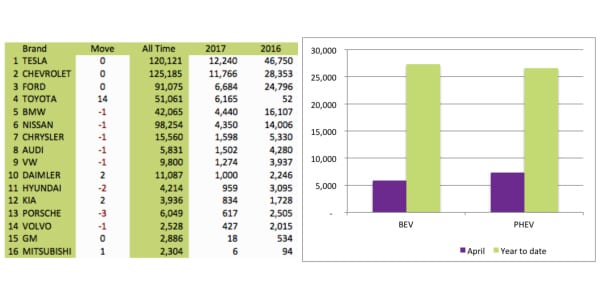
PHEV vehicles are gaining on the lead of BEV vehicles as Toyota Prius sales continued its upward momentum while deliveries for the Nissan Leaf and Tesla’s Models S and X slipped (hard). Sales for new models introduced through the month were a mixed bag, with the Cadillac CT6 PHV only racking up 6 units while the Chrysler Pacifica PHEV mustered 205 units after a delayed start to the year. The Chevrolet Bolt recovered nicely and Fiat had a record month with the 500e after introducing special deals. A big loser was the Mercedes C350e, dropping to only three units from a high of 210 in January.

#2 – Citroën’s EV strategy unwrapped
Citroën this week shed some light on its electric vehicle strategy. The PSA Group company plans EVs across the range starting 2020. The strategy mimics Hyundai’s strategy with the Ioniq, having an ICE, PHEV and BEV version. The approach is seen as quite expensive, but hopefully, the company gained some inside knowledge from the Citroen C-Zero, one of the first EVs of the decade.
Citroen CEO Linda Jackson was quoted by Automotive News Europe as follows – “Our strategy for electric vehicles is not to have a vehicle dedicated to electric, but to have electric across the range so that customers can choose a gasoline model or an electric model.”
Another PSA group company, DS Automobiles the luxury marque for the French automaker, this week announced that it would have an EV by 2019.
#3 – Tesla’s shares retreats after hitting our target
Tesla shares early in the week hit the target of $320 we predicted on the 3rd of April after which it came back to test the breakout when the company announced a loss of $322m for the quarter despite more than doubling revenues. Interestingly enough if you list GM, Tesla and Ford’s market cap and total units sold it seems that investors are valuing the three top brands in the USA on their EV unit sales only.
We picked up in the fine print of the release that Tesla will add a 100 retail, delivery and service locations during 2017 globally, representing a 30% increase. The company will also add 100 Tesla Ranger mobile repair trucks during the second quarter. The production of 5,000 Model 3s per week is still on track to commence in July.
#4 – California taxes ZEV owners
The California legislature this week passed a bill to increase revenues from the transport sector in a bid to cover the increased cost of maintaining road infrastructure. The Bill included an annual levy of $100 on ZEV vehicles to compensate for the fact that EV taxes can’t be recovered at the pump. Diesel and gasoline prices increased by $0.36 and $0.30 per gallon. California is home to nearly half of all EVs in the USA.
In other regulatory news this week impacting on EV growth the EU approved a joint venture between BMW, Ford, Daimler, and VW to develop a fast charging network in across the union. The companies will hold equal shares in the JV.
#5 – EVs now 3% of BMWs sales
BMW this week released its sales data for the first quarter 2017, showing that EVs now constitute 3% of its total sales as EV sales jumped 50%. The Chairman of the Board, Mr. Harald Kruger was quoted saying “We are therefore well on course to delivering more than 100,000 electrified vehicles for the first time in 2017”. The company also announced that it would start producing it iNext autonomous brand at its Dingolfing plant form 2021. Other models expected from the German automaker is the i8 Roadster PHEV (2018), a BEV Mini (2019), and a BEV X3 (2020). The news from BMW is in stark contrast from news only six months earlier when the Board grappled with if it should pursue EVs at all (Top 5 EV News Week 49 2016).
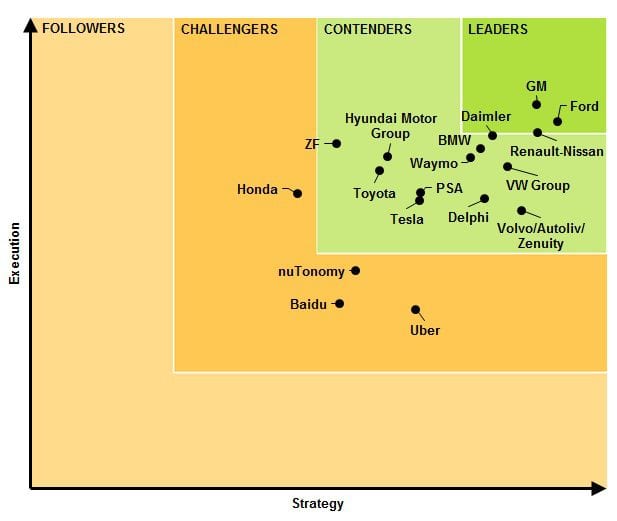
Navigant Research placed Ford and GM at the top of its autonomous driving leaderboard, surprisingly far above Waymo (7th), the pioneer of autonomous driving. Waymo was only listed as a contender, and Tesla who has already clocked over 300 million miles in Autopilot (Level 2 Autonomy) did not make the Top 10 list. Waymo, not aiming to develop a car, but rather focusing on autonomous technology has partnered with Chrysler and Ford on testing autonomous technology.Making Navigant’s findings even more surprising to us is that
Making Navigant’s findings even more surprising to us is that Waymo performed exceptionally well compared to other automakers on the list when comparing across all permit holders allowed to test autonomous tech on Californias public roads. According to CA DMV regulations, each permit holder must annually file a disengagement report, reflecting the number of events where a driver essentially has to take over from the vehicle’s autonomous mode to either prevent a traffic incident or where the system fails. Waymo posted a record 0.2 disengagements per 1,000 miles in its 2016. For a breakdown of each permit holders testing in California read our recent blog providing detailed analysis. The table below shows a summary of all the permit holders in the CA DMV program’s disengagements per 1,000 miles.

Despite Tesla aiming to have a market ready Level 5 autonomous product by the end of the year, it is only listed as a contender. Tesla is criticized by some, for being too aggressive, using its customers as guinea pigs for its AutoPilot software.
Not surprising though is that Uber features on the bottom end of the list, the controversial ride-hailing company has been in the news lately for losing its right to test in San Francisco, being sued by Waymo and a crash in Tempe, Arizona, temporarily halting its pilot program.
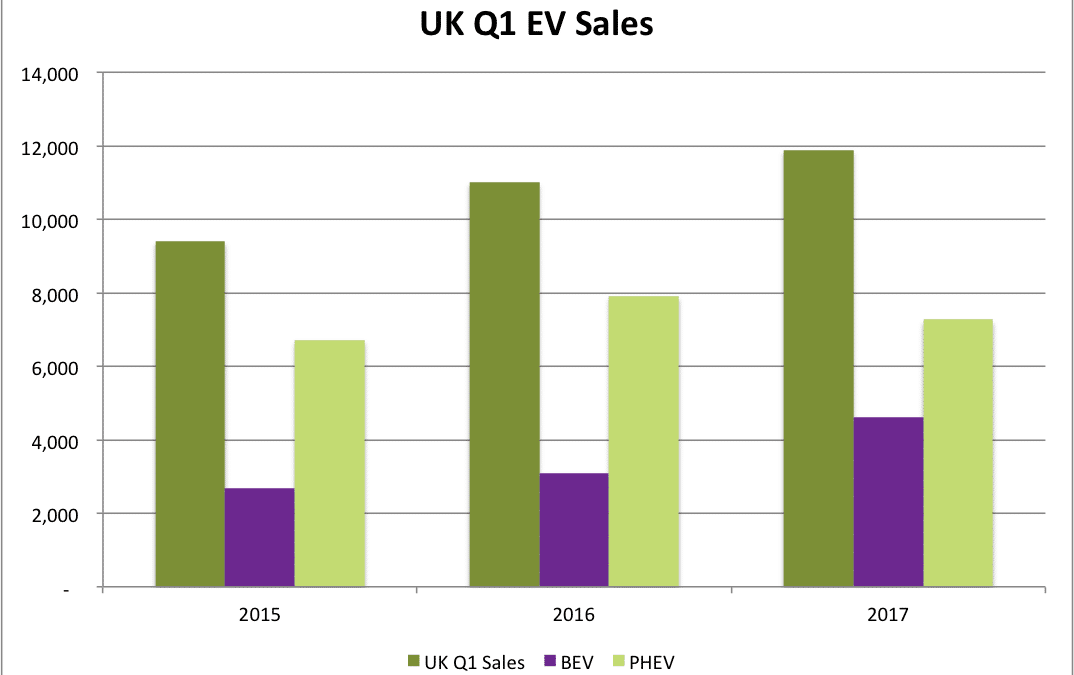
TOP 5 EV NEWS #1 – UK EV SALES Q1 2017 BREAKS RECORDS
UK EV sales for the first quarter 2017 set new records, mostly on the back of Tesla sales. The quarter’s sales bring EV’s contribution up to 1.4% of the total vehicle fleet. The UK sales for Q1, traditionally the best performing quarter for UK car sales, was closely watched as a new Vehicle Excise Duty (VED) comes into play from the first of April 2017. The new VED rules apply for all vehicles except zero emission vehicles (ZEV). According to the VED, Internal Combustion Engine vehicles (ICE) will be liable for a levy of £1,550 spread over five years on all vehicles priced over £40,000.
Electric vehicle sales for March, which contributed nearly 70% of the quarter’s sales, rose a below average 7% on a year-to-year basis, lower than the 8.4% for the total new car market. Total EV sales for the quarter was around 11,900 units, some 880 units more than Q1 2016. A deeper analysis of the UK electric vehicle sales showed a significant rise of the Battery Electric Vehicle (BEV) component, rising 34%, or around 800 units in March from the year before. Most of the 800 units can be attributed to Tesla’s massive sales drive, which led to a record 25,000 units being sold internationally, of which nearly 900, triple February’s sales, was sold in the UK during March 2017.
The improved performance of BEV vehicles compared to Plug-In Hybrid Electric vehicles (PHEV), showing a decrease of 5% to just under 5,000 units, corrects a trend since 2016 which saw 3-in-4 electric vehicles in the UK being PHEV’s.
All indications are that UK EV sales will breach the 100,000 unit mark, shared with only 7 other countries within the next couple of months. Recent surveys in the UK showed that most vehicle buyers are negative towards diesel vehicles due to diesel gate, a spectacular own goal by big auto and that 85% of vehicle owners now consider buying an EV, subject to them overcoming these EV related misconceptions.
TOP 5 EV NEWS #2 – AUDI & PORSCHE TO CO-OPERATE ON EV PLATFORM
VW sister companies, Audi and Porsche, to accelerate their respective electric vehicle strategies, this week announced that they would jointly develop a shared electric vehicle platform allowing the automakers a faster route to electric, connected and autonomous technology. The partnership will last til 2025. The German based VW Group‘s electric vehicle strategy is built on its MEB electric platform architecture, while Porsche targets the delivery of its first electric vehicle, the Mission E by 2020 and Audi, an electric SUV based on the e-Tron Quattro by 2018. Both vehicles will have various degrees of autonomy as part of its offering.
TOP 5 EV NEWS #3 – FORD’s CHINA STRATEGY
In the same week where Ford was dethroned by GM as the USA’s number two automaker, due to Tesla taking the top spot, the company released a new electric vehicle strategy for its Chinese operations. Ford, suffering from a shareholder revolt due to its lack of a convincing electric vehicle strategy and declining sales on Thursday announced that it targets 70% contribution from EV’s of its Chinese auto sales by 2025. The first phase of the strategy will be to produce a PHEV early 2018 together with its Chinese partner, Changan, also known as Chana. The company aims to have a small electric SUV within the next 5 years, capable of a battery electric range of 280 miles / 450km. The company still lacks a proper global electric vehicle strategy and the current attempt is too little and too late.
TOP 5 EV NEWS #4 – MAHINDRA & SSANGYONG ANNOUNCE EV
The Chairman of Indian automaker Mahindra and Mahindra, Anand Mahindra announced at the Seoul Motor Show this week that Mahindra and its Korean subsidiary SsangYong aims to develop a luxury electric vehicle by 2019, targeting entry into Chinese and US markets.
TOP 5 EV NEWS #5 – NAVIGANT RESEARCH DISCOUNTS WAYMO AND TESLA AUTONOMOUS EFFORTS
Navigant Research placed Ford and GM at the top of its autonomous driving leaderboard, surprisingly far above Waymo (7th), the pioneer of autonomous driving. Waymo was only listed as a contender, and Tesla who has already clocked over 300 million miles in Autopilot (Level 2 Autonomy) did not make the Top 10 list. Waymo, not aiming to develop a car, but rather focusing on autonomous technology has partnered with Chrysler and Ford on testing autonomous technology. Making Navigant’s findings even more surprising to us is that Waymo performed exceptionally well compared to other automakers on the list when comparing across all permit holders allowed to test autonomous tech on Californias public roads. According to CA DMV regulations, each permit holder must annually file a disengagement report, reflecting the number of events where a driver essentially has to take over from the vehicle’s autonomous mode to either prevent a traffic incident or where the system fails. Waymo posted a record 0.2 disengagements per 1,000 miles in its 2016. For a breakdown of each permit holders testing in California read our recent blog providing detailed analysis.

Navigant’s criteria are based on the following ten factors; vision, go-to-market strategy, partners, production strategy, technology, sales, marketing, and distribution, product capability, product quality and reliability, product portfolio and staying power. The Top Ten on Navigant’s list are Ford, GM, Renault–Nissan Alliance, Daimler, Volkswagen Group, BMW, Waymo, Volvo/Autoliv/Zenuity, Delphi and Hyundai Motor Group.
Despite Tesla aiming to have a market ready Level 5 autonomous product by the end of the year, it is only listed as a contender. Tesla is criticized by some, for being too aggressive, using its customers as guinea pigs for its AutoPilot software. Not surprising though is that Uber features on the bottom end of the list, the controversial ride-hailing company has been in the news lately for losing its right to test in San Francisco, being sued by Waymo and a crash in Tempe, Arizona, temporarily halting its pilot program.
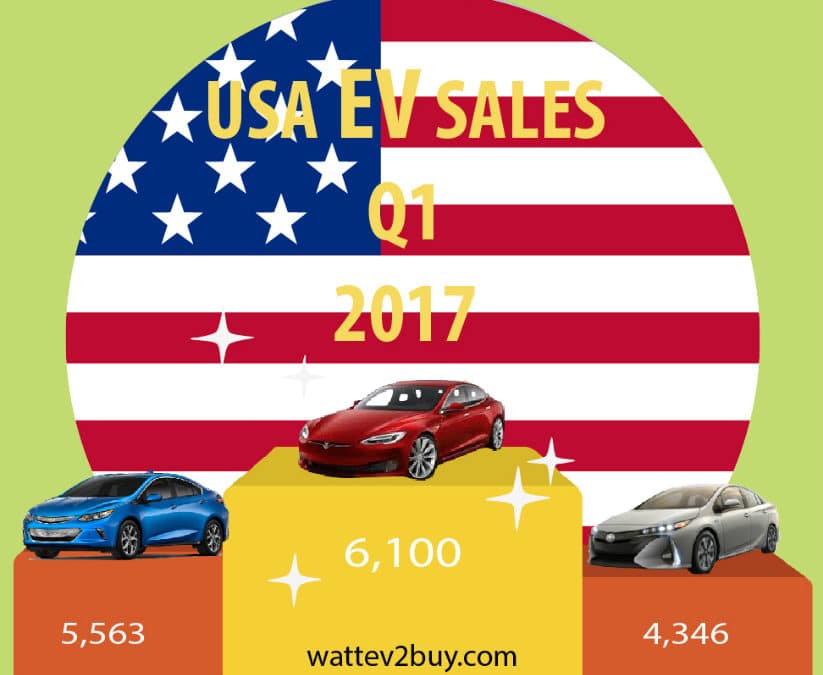
We look at the Top brands, Best and Worst Models and how the battle between battery electric (BEV) and plug-in hybrid (PHEV) technologies play out in the summary of USA EV Sales Q1 2017.
The highlights for USA electric car sales in Q1 2017 was:
There are no surprises in the Top 3 Electric Vehicle Brands as Tesla remained on top, due to increase sales of the Tesla Model X, and GM and Toyota brought new models to book. Quarter 1 2017 was the first full quarter for the Chevrolet Bolt, the world’s first mass-market car. The Chevrolet Bolt‘s performance was rather disappointing, with sales dropping from a January high. The reason can be one of two, either GM‘s slow roll-out is to blame, or most buyers are waiting for the Tesla Model 3. Toyota’s only Plug-In Hybrid (PHEV) vehicle, the Toyota Prius Premium, performed remarkably well, taking in consideration that the battery capacity and range does not offer a real advantage to its competitors.
The bad boy on the block was Ford, barely hanging on to the Top 5 list of electric cars. Were it not for Porsche’s bad performance in the VW Group; the German automaker would have unseated Ford in the Top 5. BMW dropped out of the Top 5 list as Toyota entered the list in the third position. Daimler showed commendable improvement while Hyundai and Volvo joined Ford on the losing side. Nissan still shows consistent growth with its only electric vehicle, the Nissan Leaf.
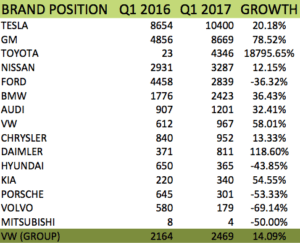
Of the new electric vehicle models that came to market in this quarter, the Toyota Prius Premium, a PHEV outperformed GM‘s Chevrolet Bolt, a BEV by nearly 30%, a disappointing performance for the first mass-market electric vehicle. Both Mercedes-Benz and BMW had two more models in this quarter compared to 2016, with the Mercedes-Benz C350e and Mercedes-Benz GLE 550e outselling the BMW 330e and BMW 740e.
The Mercedes Benz S550 PHEV, BMW i3 2017 and Tesla Model X were the best performing existing models, although for the BMW i3, its the 50% improvement in battery capacity that attributed to its increase in sales.
The Tesla Model S sales remained flat on a year-to-year basis, despite continued improvements in its software and hardware.
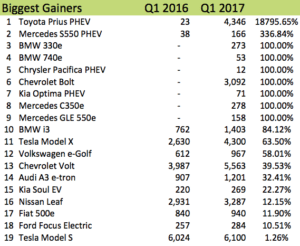
Sales of the Cadillac ELR fizzled out completely in anticipation of the release of the Cadillac CT6 PHEV this month. Both the Porsche Cayenne and Panamera showed big losses in sales from a year ago, impacting on total growth for the VW Group. Judging from the Ford models sales slump, it is clear the century-old automaker needs to reassess it electric vehicle strategy. The big drop in the Volvo XC90 T8 can be attributed to the challenge faced by all automakers coming late to the electric vehicle party. To enter the electric vehicle market, lagging brands alter existing models to include batteries but in the process lose performance as drivers complain about smaller fuel tanks.
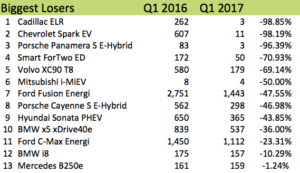
Battery Electric Vehicle’s (BEV), of which nearly half is constituted by the two Tesla models, outperformed plug-in hybrid electric vehicles. Over 20,000 BEV units were sold in the first quarter of 2017 compared to just under 15,000 a year ago. Q1 2017’s 19.2% increase in sales showed a slight improvement for the technology on Q1 2016 when BEV outsold PHEV with 17%. The USA is one of the few countries where BEV vehicles outsold PHEV’s since 2016, read our blog on the Top 10 EV Markets.
In total there is 13 BEV models and 20 PHEV models available in the USA market in 2017 so far. Consumers had a choice of seven new PHEV models in Q1 2017 and one BEV compared to the same period in 2016.
New model’s coming to market in the next quarter include three plug-in hybrids, the Cadillac CT6 PHEV, BMW 530e, and the Porsche Panamera 4 E-H, while only one BEV, the Hyundai IONIQ Electric will be released, should there be no surprises from Tesla on the Model 3.
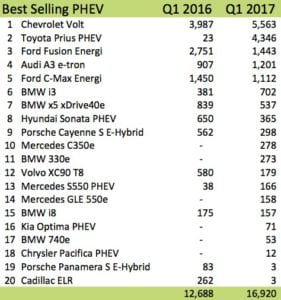
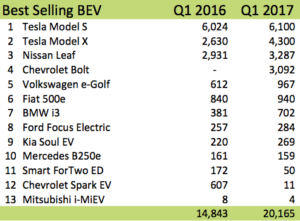
Please leave us a comment on your thoughts regarding the electric vehicle models available to the US consumer.
Note on data used: For comparison purposes, the BMW i3 sales data was assumed to be divided in two, to accommodate for the BMW i3 BEV and REx PHEV
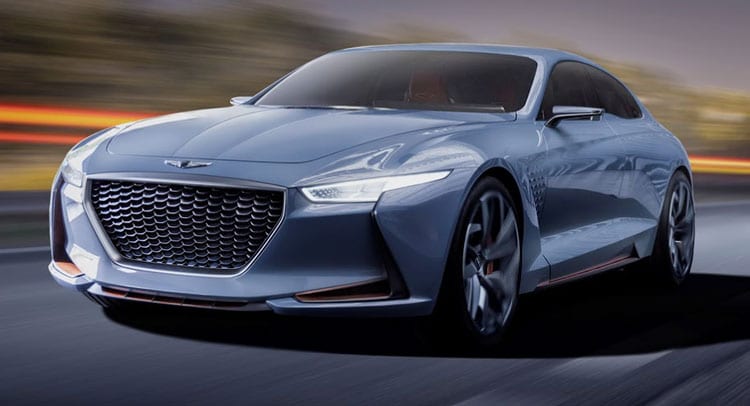
Are you looking for the perfect electric vehicle? Need to compare electric vehicles? Our easy to use tool, EV4U, helps you to find the perfect electric car! 
ONE
News from the past week shows the that the pendulum is swinging quicker than expected for electric vehicles. The results of two surveys in the UK this week was a clear indication that demand for electric vehicles is much more than most automakers anticipated. Google searches for the electric vehicles has also surged by 127%.
A survey by Venson Automotive Solutions shows that 85% of respondents from a survey in the UK are now seriously considering buying an EV. Reading between the lines, wattEV2Buy finds it significant that range is no longer the deterring factor when prospective buyers are considering buying an EV. For long, most respondents to such surveys cited range as overarching reason for not buying an EV. In the Venson Survey, a lack of charging stations was the biggest reason for prospective buyers to put off the buying decision. In a separate survey by Carbuyer, 61% of respondents said they would not buy diesel vehicles again because of “diesel gate,” the spectacular “own goal” by big auto. Diesel sales were down 9% in the UK for the month of February while plug-in vehicles rose by 49%.
Most automakers have caught on to the shift, but not aggressive enough, while others are being forced to produce plug-in electric vehicles. Labor organizations within Audi have asked management to build more electric vehicles, as some of the factory units fear missing out on the technology will lead to job losses. Hyundai was forced by shareholders to shift focus on Fuel Cell Hybrid Vehicles to plug-in electric vehicles, while Daimler has accelerated its massive $10 billion planned investment in EV’s. All these turnarounds in strategy pale in comparison to that of Sergio Marchionne, FIAT Chrysler‘s CEO, but more Hyundai, FIAT, and Daimler later in the post.
Below are the results of the Venson survey
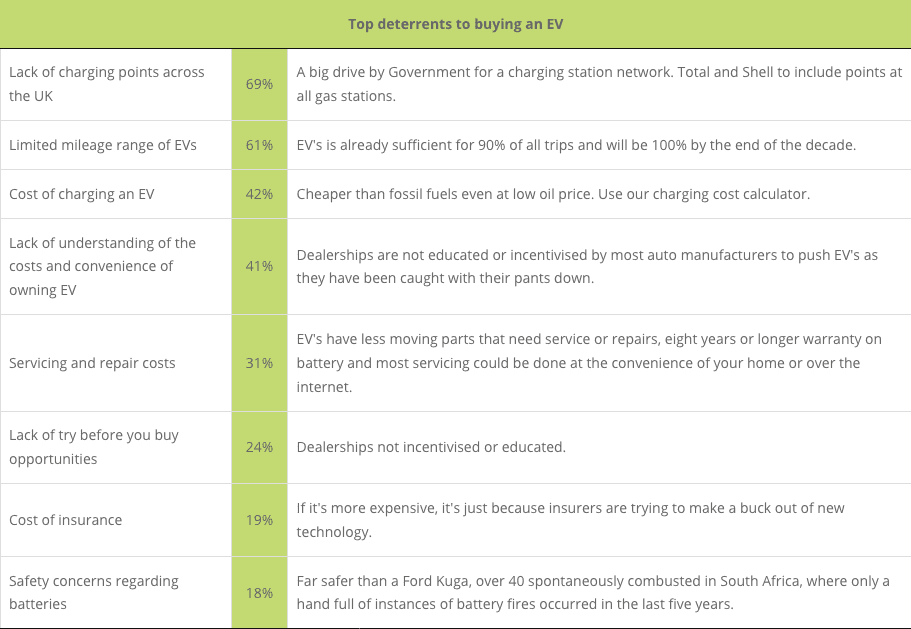
TWO
Hyundai admits electric vehicles are an imperative. During the Los Angeles Auto Show in 2016, the company said that it planned to have 14 new alternative vehicles in the US by 2020. The planned product mix include’s four plug-in hybrids, four electric and one hydrogen fuel cell model. Thursday Mr. Lee shed some more light on the company’s plans, indicating that the first fully electric vehicle planned for next year would be a small SUV. According to Mr. Lee, the SUV would have a range of 185 miles (300km). Although the company is developing its own dedicated platform, it can’t say when it would be ready. The platform is modeled after that of Tesla, with the batteries in the floor, allowing for more battery capacity and cabin space. It is clear from the announcement that the company is aggressively trying to catch up on lost ground.
Hyundai now expects the EV market to be around 10% of the global fleet by 2025, at which point Fuel Cell EV’s will take off. Hyundai’s luxury brand, Genesis also announced today that it would introduce a PHEV by 2019 and BEV by 2021.
THREE
With the run-up to the Formula E to be held in Mexico City today, Ferrari came out in support of the event. FIA’s Auto magazine quoted the CEO of FIAT Chrysler, one of the auto industries biggest naysayers of EV’s, Sergio Marchionne as follows in an interview:
“The first is that we need to be involved in Formula E because electrification via hybridization is going to be part of our future.”
“We have already developed a hybrid supercar, La Ferrari,” he said, “and on future Ferrari models we will leverage new technologies as well as electrification.”
And this from a man that came out vehemently against the technology, saying it will never catch on.
FOUR
Daimler this week, after a board meeting in Berlin, announced that it would accelerate its $11 billion investment in electric vehicles by bringing it forward with three years from 2025, as announced last year to 2022. Reuters reported that the automaker’s aggressive stance are the result of it not being able to cut fleet emissions of 123gm CO2/km from 2015 to 2016 in Europe. Europe has set a very stringent target of 95gm CO2/km by 2020. Daimler’s own target for 2020 is 100gm CO2. The German automaker cites the popularity of SUV’s as the reason for it not cutting its emissions for the first time since 2007.
FIVE
GM acquired its second Y Incubator company, the Italian based OSVehicle, for $1.1 billion in a bid to develop a self-driving “Vehicle-as-a -Service” (VaaS).
OSVehicle provides an open-source platform to hobbyists and other start-ups. Customers can have a full EV platform, the Tabby EVO, shipped between $12,500 and $19,500. OSVehicle claim start-ups can save $2 million and 3-years in Research and Development by going the open-source route. The open-source platform enables for larger disruption in mobility options using electric vehicles. Imagine adding George Hotz’s self-driving car kit which he plans to market through his company comma.ai at a price of $1,000, and you can build your own “ai-chauffeur” driven zero emission vehicle.
GM aims to use OSVehicle to develop its EDIT modular self-driving car based on the Chevy Bolt M1 platform. The decision was influenced by the ability of modular platforms to extend the lifespan of heavy use vehicles, such as ride sharing and hailing applications. OSVehicle‘s Yuki and Tin Hang Liu claim that through the use of modular architecture, car fleets can last ten times longer by enabling seamless hardware upgrades of self-driving and connected car technologies.
Picture: Genesis Concept introduced at New York Auto Show
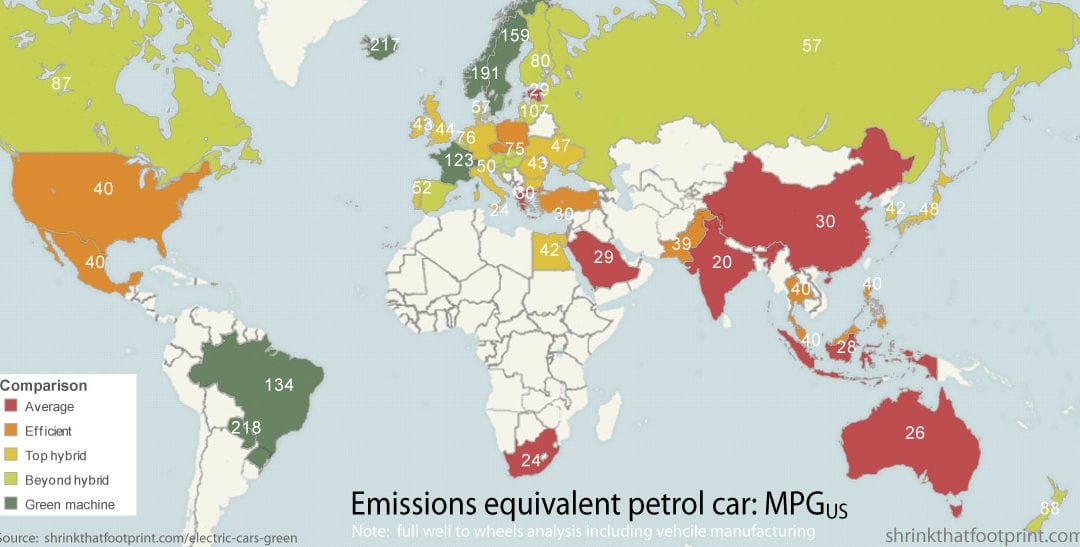
ONE
Bloomberg printed an article this week named “The Electric Car Rush Started Too Early” following BMW‘s release of its financial statements, showing a profit margin of only 8.9%, which was the lowest since 2010. The reason for the pressure on some automakers bottom line is the heavy investment required in research and development for the strategy shift towards new mobility trends, including autonomous vehicles, electric vehicles, connected (focus on secure), and shared mobility options. In BMW‘s case, the investment so far is $4.3 billion. The article also criticized EV’s real environmental cost by the hand of a graph (below) from the website shrinkthatfootprint.com showing that EV’s carbon emissions, when charged from coal, can be as much as four times higher than when charged from green sources such as hydro and other renewables.
TWO
Next EV‘s CEO announced this week that it plans to commercially launch an affordable Level 4 Autonomous electric vehicle in the USA by 2020. The model will be released under the company’s newly minted NIO brand. NIO is partnering with Israeli Mobileeye (camera-based autonomous systems), Nvidia (AI chip) and NXP semiconductors on the autonomous system.
THREE
The Mercedes parent, Daimler AG invested in ChargePoint, the operator of a network of charging stations. The investment is in line with the German automakers push into electric vehicles.
Another significant investment this week was by the Shanghai Listed Far East Smarter Energy Group in the UK based Detroit Electric. The investment totaling £1.5 billion will eventually lead to the creation of 400 jobs at the company’s Leamington Spa facility for the production of its SP:01 EV.
FOUR
Although light on new commercial electric vehicles the Geneva Motor Show this week offered some great eye candy in the form of new concept vehicles, which included:
Nissan announced the unveiling of the new version of its popular Leaf EV expected in September, with commercial sales shortly after that. The Leaf is expected to have a range of 200 miles and some autonomous driving ability through its ProPilot system.
Techrules from China unveiled their four wheels three seater production sportscar, the Techrules REn, which features range extender technology.
FIVE
On the regulatory front. In the east a ministerial meeting was called in India, chaired by the finance ministry to setting standards for the country’s electric vehicle future. In the west, the British Budget failed to give anything new to the electric vehicle sector. Some market observers expected guidance on emissions and carbon taxes. Chancellor Hammond did, however, confirm £270 for EV’s AI and robotics.
.
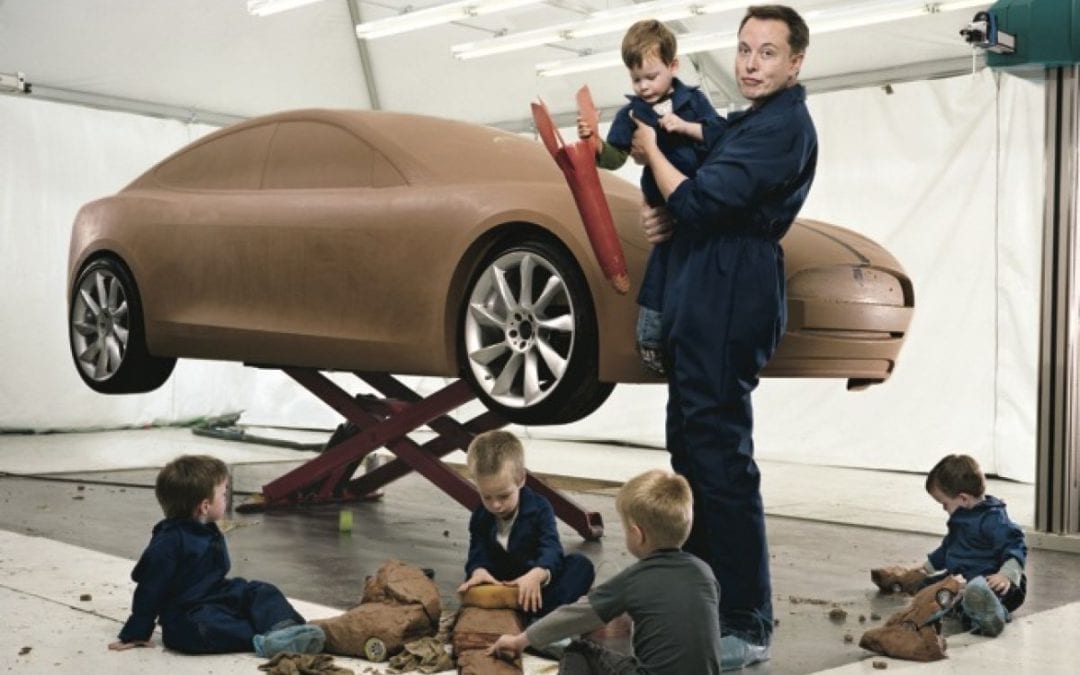
Electric vehicle sales have breached the 2 million unit mark internationally in 2016, and most automakers have committed to an electric vehicle strategy, some more aggressive than others and in the minority of cases not having a strategy is also seen to be a strategy. The Top 10 Electric Vehicle Brands constitutes a good proxy to evaluate trends within the market and to determine the reason for a brand’s success or failure. Also, as we reach the halfway mark to the point where electric vehicles are expected to reach between 9% and 11% of the total vehicle fleet by 2025, a look into the Top 10 will provide guidance on the expected winners and losers as the disruptive nature of the technology takes effect.
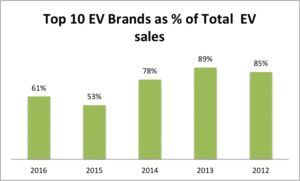
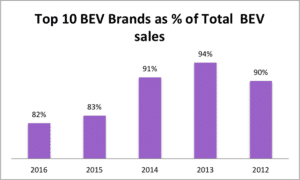
Sales of the Top 10 Electric Vehicle Brands constitute 65% of all electric vehicle (EV’s) sales, and for the Top 10 BEV list, 85% of all pure electric or Battery Electric Vehicles (BEV’s) are from the Top 10 Brands in the segment. However, the trend on both lists is on the decline as more and more brands participate in the market. The Top 10 Brands in the pure electric space owns a bigger percentage of the market segment as BEV’s requires more specialization and greater risk. Due to the high cost of battery technology and range anxiety, most automakers excluded themselves from the pure electric segment, providing a golden opportunity for a few dedicated brands to seize the opportunity and leapfrog their competitors into the coming decade.

The following interesting point emerges when comparing the Top 10 Electric Vehicle Brands positions in 2012 with the overall standings and the latest standings in 2016:

Looking at the Top 10 Electric Vehicle Brands list when one only include Battery Electric Vehicles an entirely different picture emerges in many respects:
With EV sales rapidly climbing in 2016 and countries such as Norway now reaching EV sales of over 30% of new vehicles, owning an EV is not just an environmental requirement anymore drawing early adopters. Owning an EV’s has become cool and entering the growth phase in markets such as Norway and The Netherlands, where a couple of “Big Auto” manufacturers have opted to target the mainstream market through bringing Plug-In Hybrid versions of existing models. Many of the “Big Auto” brands are play stalling tactics by calling for the easing of emission standards or blocking Tesla’s direct sales model. Meanwhile, they are falling further and further behind in a market that is becoming ever more popular. Most of these manufacturers might be of the 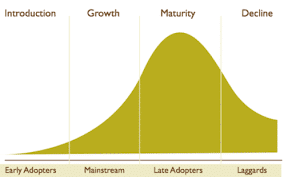 opinion to follow a wait and see approach, hoping that the first mover’s trips and falls due to the high risk and cost, with the intention to swoop in later with their big budgets to poach talent and ideas. We will analyze the tussle between Battery Electric Vehicles and Plug-in Hybrid Electric Vehicles in a follow-up post.
opinion to follow a wait and see approach, hoping that the first mover’s trips and falls due to the high risk and cost, with the intention to swoop in later with their big budgets to poach talent and ideas. We will analyze the tussle between Battery Electric Vehicles and Plug-in Hybrid Electric Vehicles in a follow-up post.
Picture Ellon Musk: The New Yorker
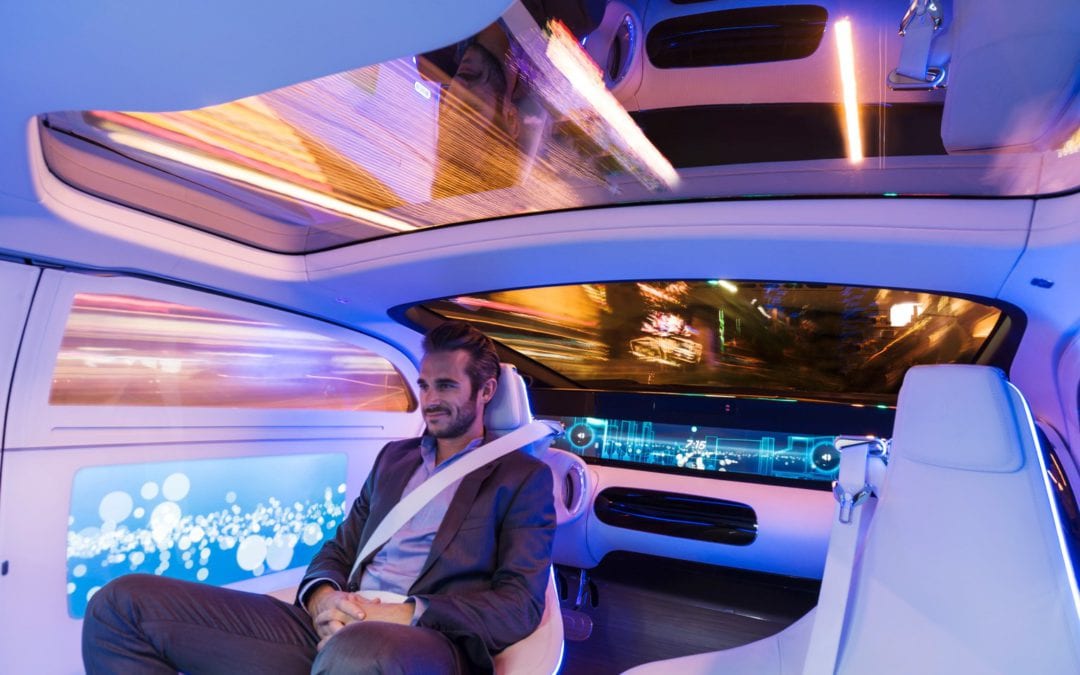
ONE
Daimler and Uber announced a cooperation agreement where Daimler will introduce and operate self-driving cars on the Uber network. Uber abandoned efforts to build its own vehicle early on, rather focusing on partnering and acquiring technologies to achieve its goal of a self-driving fleet for its network. Uber acquired autonomous trucking company Otto in 2016 and made a successful delivery of a consignment of beer before being blocked by the California DMV.
TWO
Public opinion and consumer boycotts are driving the composition of President Donald Trumps advisory council with Uber’s CEO Travis Kalanick this week resigning his seat on the council amid call to delete the Uber app. Some shortsighted Tesla owners are now also asking their deposits back for the Model 3 due to Elon Musk’s position on the council. Elon, this week in a tweet, explained that his position should not be seen as a support for Trumps policy’s but rather as an opportunity to influence the causes that Mr. Musk believes in, such as electric vehicles and his Mars project.
THREE
To support the new Mayor of London, Sadiq Khan’s efforts to combat air pollution in the city the London Metropolitan Police Service, also know as Scotland Yard launched a new green fleet of over 250 new energy vehicles by the end of the year. Tesla and other automakers have been approached to trail their new energy vehicles for front line operations as part of the first phase, which would eventually see the overhaul of Scotland Yards fleet of 4000 vehicles.
FOUR
Faraday Future’s future remains a contradiction in terms as the company struggles to remain afloat. This week the company tried to allay fears about the future of its North Las Vegas plant. The company announced that construction would go ahead albeit on a much smaller scale in a phased approach. The new phased construction is in line with the company’s reduced model lineup down from 7 models to 2. The smaller lineup now only consist of the FF91 unveiled in January at the CES in Las Vegas and a crossover targeted at the Tesla Model X. It remains to be seen if the company can achieve its new goals amongst the challenges created by its financial position, including holding on to the necessary skills as the start-up keep on losing key executives.
FIVE
The California Department of Motor Vehicles released it’s 2016 Autonomous Vehicle Disengagement report this week. We reported earlier that a total of 20 companies were authorized to test the autonomous technology on the State’s public roads by the end of 2016. The Disengagement report reflects the number of events where a driver essentially has to take over from the vehicle’s autonomous mode to either prevent a traffic incident or where it fails. Alphabet’s autonomous vehicle program moved from Google to a stand-alone company Waymo, revealed its 2016 scoring in a blog post by it’s Head of self-driving technology. Waymo showed a marked improvement from its 2015 safety related disengages of 0.8 (341) disengages per 1000 miles to 0.2 (124) in 2016.